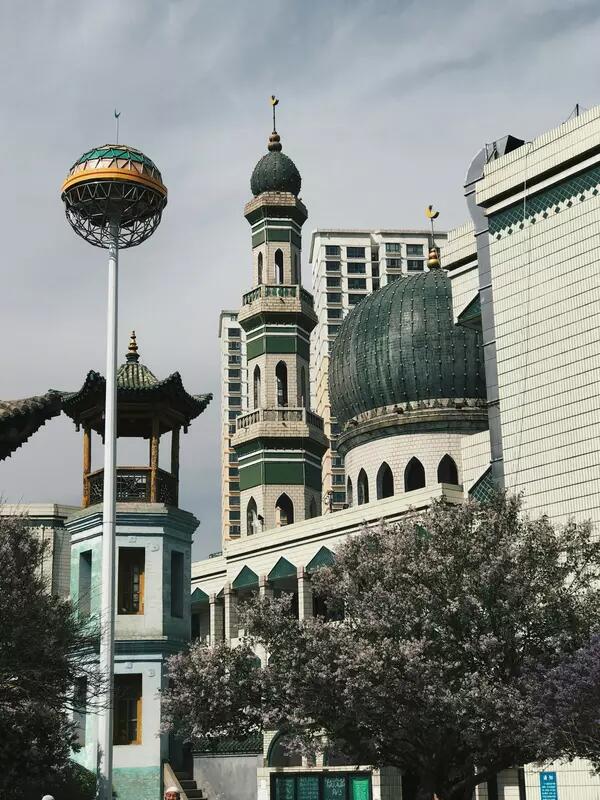
Gendering the multiple imaginaries of the Belt and Road
When the ancient Silk Road is presented as the precursor of the Belt and Road Initiative (BRI) in the Chinese government’s official narratives, images such as a caravan of turbaned travelers riding camels across a desert landscape are often deployed to evoke a romanticized transcontinental history of commerce and exchange. In most of these images, these unfamiliar travelers from exotic lands are obscured as outlines and blended into the contours of the desert backdrop. Alongside the land-based imaginaries of visitors from afar, other figures associated with sea-based imaginaries include Zheng He and his fleets that ventured from China to Southeast Asia, the Middle East, and the coast of East Africa over seven voyages between 1405-1433 CE. Both types of characters are represented as mobile Muslim men navigating vast stretches of land and sea to facilitate exchanges of commodities and knowledge.
Showcasing these “Muslim-based” connections allows China to reimagine and appropriate the cultural past as part of its diplomacy strategies to connect with Muslim majority countries in Southeast Asia and the Middle East. This approach has often become depicted by expanding the visual cues of the prototypical Arab and Persian merchants to construct a space whereby architectural references resemble the built environment of Agrabah in Disney’s animated movie “Aladdin.”[1] In the case of Zheng He, the tall fleet admiral and diplomat donning a long cape has become the most recognizable icon circulated in heritage diplomacy between China and countries along the maritime route of BRI.[2] These historic narratives of mobile Muslim men are at odds with the Chinese state’s ongoing surveillance over Muslim populations, especially limiting the possibilities of practicing their faith in Islam beyond the state-sanctioned spaces.[3] This approach seems to be particularly peculiar given the Chinese government’s various schemes of strictly regulating Uyghur masculinity through controlling their mobility.[4] However, this does not indicate that the contemporary counterpart of the traveling Muslim men is completely absent from the geography of China’s Silk Roads. One of the examples is male members of the government-sponsored pilgrimage delegation that has been part and parcel of China’s Hajj diplomacy with Saudi Arabia.[5]
The metamorphosis of “Muslim men on the move” across space and time along the Silk Road highlights the importance of examining the Silk Road imaginaries through the lens of gender. The visibility and mobility of the Muslim community in China, notably the differentiated degrees and forms of being mobile between different subgroups, can thus be understood through analyzing what kind of Muslim men can be seen, and hence are allowed to be mobile, within the designated spaces defined by the maps of the Silk Roads. Moreover, the selective visibility of Muslim minorities thus sheds light on the gendered aesthetics in visualizing the acceptable forms of masculinity in the official discourse of the Silk Road. Last, while Muslim women are largely missing in the discourse of the historic Silk Roads, it is worthwhile examining the extent to which the discourse of the Silk Road is engaged by Muslim women in gendered expressions of their identity beyond state-sanctioned spaces.
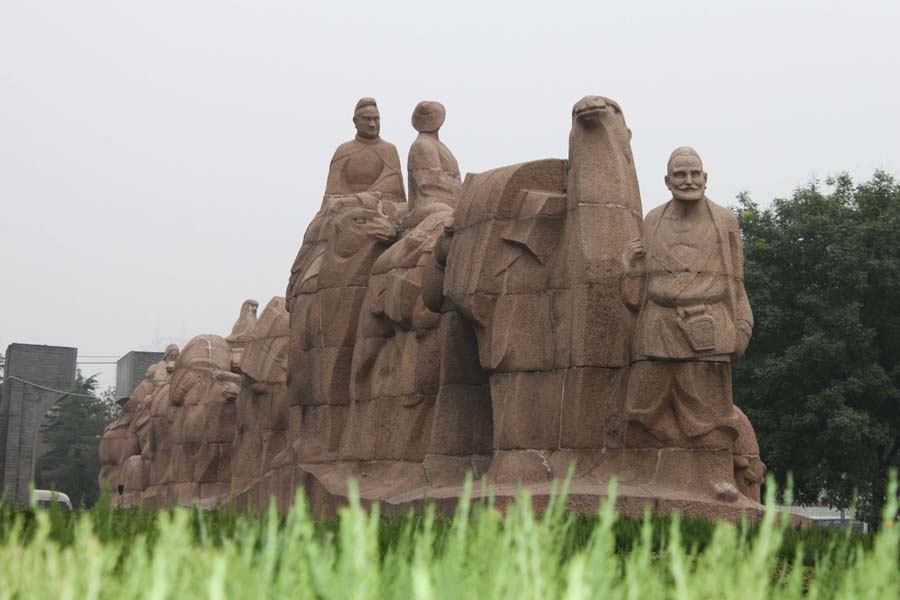
Gender has increasingly become an increasingly crucial aspect of the Chinese government’s agenda on nation-building. The state intervention in interpreting and encouraging specific gender norms can be seen in various contexts. Recent examples include: the backlash of the Chinese state media’s praise of nurses that shaved off their heads for preventing the spread of diseases as heroic during the early phase of the Covid-19 pandemic; the recent nationwide anxiety over an apparent “masculinity crisis”; and the educational reform over adding more components of physical education to nurture male students’ masculinity.[6] Gender has long been central to China’s campaigns on managing Muslim communities, especially equating Uyghurs’ gendered self-fashioning practices like veiling and keeping facial hair to radical and conservative Islamic thinking in the “Beauty Project” (Liangli gongcheng) in Xinjiang between 2011 and 2016.[7] Thus, from the Chinese state’s point of view, the ways in which Muslim men and women appear in public space signal more than their self-fashioning preferences, but also more politicized issues such as security.
To examine the intersections between gender, visibility, and mobility of Muslims in the Silk Road-based context, I engage visual materials on Muslim travelers and Zheng He in art and heritage projects to analyze the political rationale behind the acceptable aesthetics of Muslim masculinity. I then compare different forms of Muslim masculinity in historic and contemporary Silk Road-based narratives, specifically how Hui Muslims are presented on popular media and managed on the ground.
Ethnographic accounts used in this discussion are derived from long term fieldwork in the Hui community in Xi’an, China since 2013. Xi’an is an especially productive site for understanding the diverse experiences of Chinese Muslims in the context of BRI. Xi’an is the officially designated eastern terminus of BRI’s territorial route and the starting point of the historic Silk Road. Xi’an and its connections to the Silk Road have been reinforced by the UNESCO’s recognition over its involvement in the transnational heritage project “Chang’an-Tienshan heritage belt.”[8] The Muslim Quarter, locally known as Huifang, is home to local Hui Muslim residents and Muslim migrants from neighboring provinces. Ancient mosques built in a distinctive Chinese style that resembles Daoist and Buddhist temples and the fusion of spices and ingredients from Central Asia and the Middle East with the local regional cuisine’s cooking techniques have illustrated the long history of Islam and the local Chinese society and culture’s integration. Yet, like other Muslim groups’ situations in China, the Hui are “familiar strangers” that are well versed in the Chinese language and cultural references and familiar with the social norms in the Han-dominant society. Yet, they are seen as distant from the Han Chinese for their faith in Islam. The discourses of familiar strangers and traveling Muslims on the Silk Road both highlight the wide spectrum of familiarity and strangeness that constantly shifts the definitions of accepted gender norms of Muslim subjects.
Time traveling Muslim men on the Silk Road
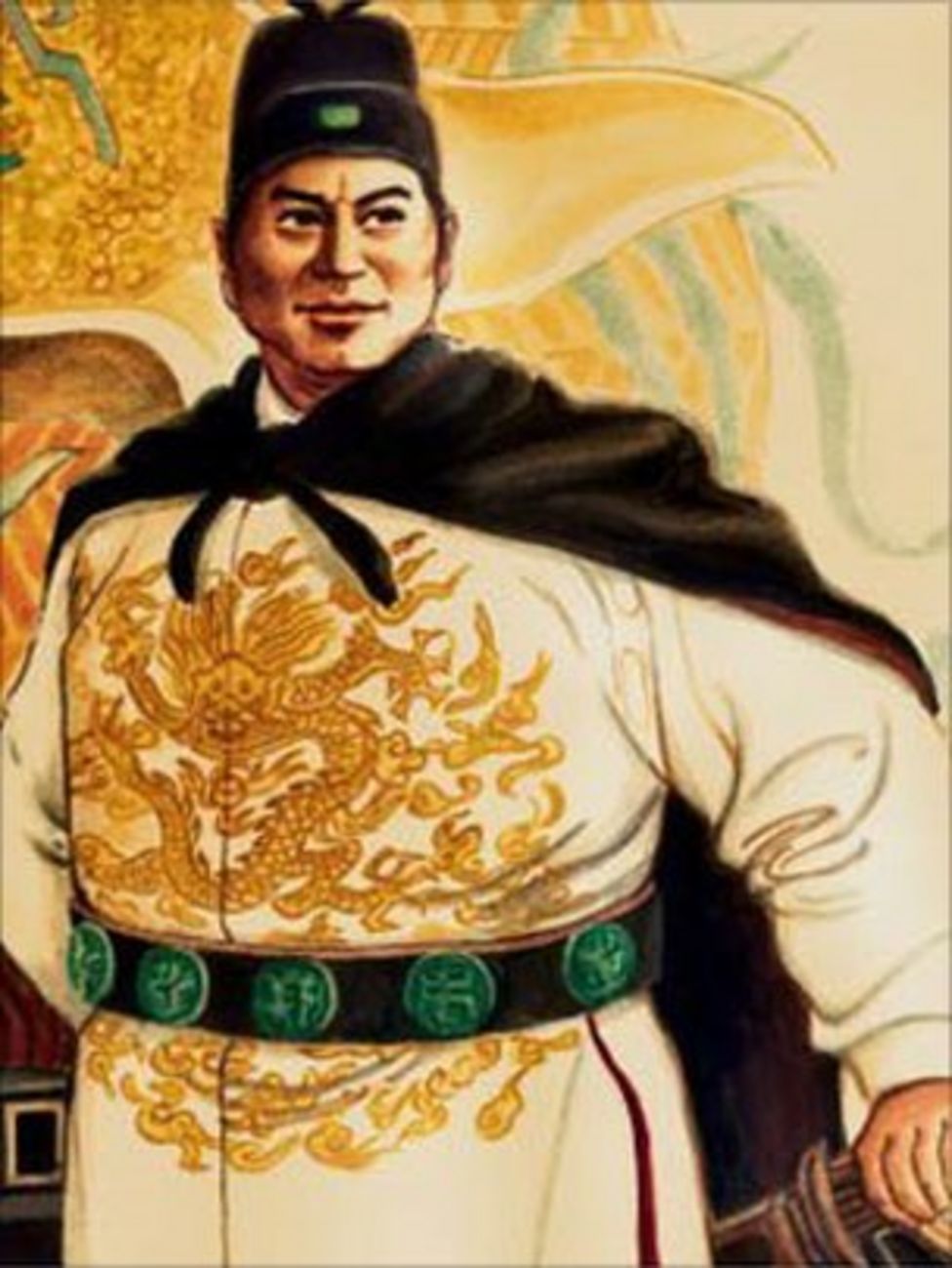
Muslim men on the move, as discussed earlier, are key figures in the imaginaries of the historic and new Silk Roads. Notably, despite the evolving spatial and temporal configurations of the Silk Road imaginaries, Muslim men remain relevant to the Silk Road due to their continued mobility along these routes. Muslim masculinities are thus accepted by the Chinese government only when they are visible and mobile within the state’s designated spaces on the Silk Road. In other words, Muslim masculinity presented in China’s official discourse is a tamed version that is based on China’s diplomacy towards Muslim countries and Han-centric ethnic hierarchies.
Taking the images of traveling Arab and Persian merchants as an example, they are recognized in the China-centered narratives of the historic Silk Road for aspiring to be immersed in Chinese society to learn the Chinese culture that they admired. As illustrated in the group sculpture of a caravan of Persian and Tang merchants in Xi’an, China (see Figure 1), the three Persian members of the caravan, alongside three Chinese members from the Tang empire, present a form of masculinity that is distinctive from the Tang men through their exotic physical features like their facial hair and deep-set eyes and different sartorial patterns including turbans and skullcaps. Their presence, as part of the Silk Road ensemble, signifies China’s inclusiveness and openmindedness across these historic trade routes. In this artistic representation, the Persian travelers and the camels are necessary elements to set the scene of adventuring in unknown and exotic lands along the Silk Road. Rather than incorporating the foreign men and non-native animals as part of the danger that awaits in the unknown land, they represent a form of tamable unfamiliarity that helps to champion China’s victory in conquering the harsh terrains that constitute the Silk Road. This also reflects a common theme manifest in how Muslim men are represented in other similar contexts. For the Chinese artists, these figures’ unfamiliarity and distance from the Han Chinese-dominant society needs to be rendered visible rather than obscured. Yet, the degree of their visibility is only to the extent that they support China’s central role in coordinating the Silk Road’s networks.
Similarly, in the case of Zheng He, while the “traveling Muslim man” has morphed into a subject of the Ming court, the character of his “tamed unfamiliar masculinity” remains. Even if Zheng He is no longer depicted as being as foreign as these Arab and Persian merchants, his visibility and mobility in the foreign lands are all part of the mission to promote the Ming court’s image. The visual representations of Zheng He in many popular discourses feature a cape-donning, seafaring man with a very distinctive and accentuated jawline (see Figure 2). This portrayal of Zheng He emphases the thick eyebrows and big eyes, alongside a facial impression that resembles that style in China’s socialist propaganda art that signifies heroic figures’ embodiment of righteousness. Unlike the visual representation of the Persian merchants in the group sculpture, the so-called “foreign-ness” of Zheng He is not highlighted in his appearance. This shift reflects the changing strategy of visualizing Muslim men in the official narratives of the Silk Road. Rather than primarily highlighting the presence of foreign subjects in the Silk Road spaces, the “traveling Muslim men” are represented as a “familiar stranger” whose differences such as the faith in Islam are not as important as their loyalty to China.
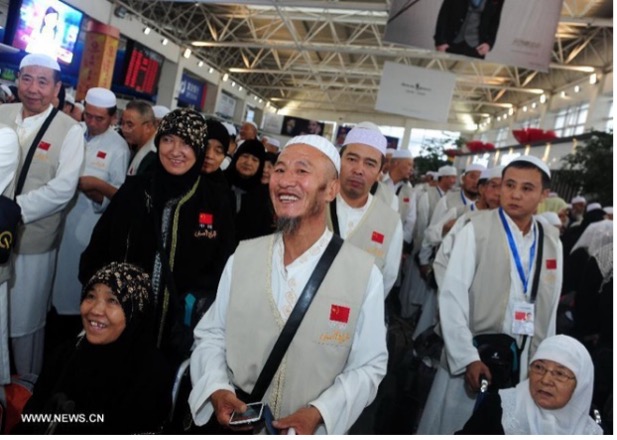
The current trope of “traveling Muslim men,” as seen in both popular cultural references (Figure 4) and Muslims that participate in state sponsored-pilgrimage programs (Figure 3), maintain some of Zheng He’s characteristics. Their familiarity to the Chinese government, as an equivalent to Zheng’s loyalty to the Ming court, is expressed through their performance of being patriotic Muslims that follow the designated itinerary approved by the central government during the Hajj. The carefully curated caravan of “traveling Muslims,” moving on the Silk Road’s routes via chartered flights, is the outcome of a strict screening process of applicants to the state-sponsored pilgrimage program. Notably, concerning the traveling Muslim men, their movements and expressions of their faith in the holy sites, in spite of being less familiar to the Han-dominant society, remain in a safe range of strangeness that is not threatening to the secular state’s authority.
Another form of the “traveling Muslim men” appears in a more sedentary manner, in which their ability to travel along the routes of the Silk Road is framed as part of their imagined ancestries. Their stationary state, in combination with their traveling ancestries, becomes instrumental for the Chinese government to promote an accepted form of Muslim masculinity. Their tamed masculinity and conditioned mobility are in the space of their everyday lives, specifically in communities like the Muslim Quarter in Xi’an. Hui men in the Muslim Quarter only become visible in the lens of the Chinese state as those that continued to pass on the cultural heritage of the Silk Road. For example, as featured in a well-received Chinese documentary “A Bite of China,” Hui men often appear as “white skullcaps-donning middle-aged chubby chefs with aprons in dull colors.” In addition to Hui chefs, other male residents in the Muslim Quarter are primarily featured as customers that enjoy their comfort food with friends and family. This narrative overlaps with the local non-Muslims’ gendered stereotypes of the Hui. Particularly, Hui men are assumed to be less educated and not willing to engage in jobs beyond their “traditional” occupation in the food industry. Their “backwardness” thus prevents them from being more integrated
into the Han-dominant society. The Hui’s strangeness can thus be captured by a common derogatory saying that goes “Fan haochi, hua nanting” (their food is palatable. Their words are not quite there yet). The second part of the expression touches on not only the Hui words and phrases that are not easily understood by non-Hui people but also the gap between the Hui community’s interest and the Han-dominant society. Narratives as such have also been prevalent in cases associated with the local city government’s plan in implementing urban renewal projects in its historic downtown district. The Hui community’s members have been resisting the city government’s plan of demolishing their residential area for being “dilapidated and lack of sufficient infrastructure.” These so-called “average looking” Hui men and their gatherings have thus become signals of threats to the local government’s authority in this context.
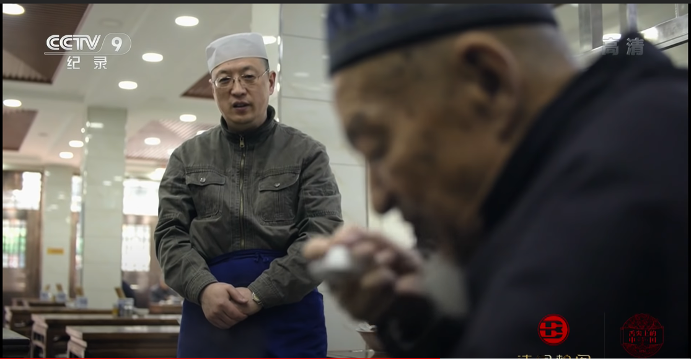
Conclusions
In conclusion, I examined different visual representations of Muslim masculinities to reflect on gendered politics in the official narrative of the Silk Road. Specifically, the gendered imaginaries of people of the Silk Road reflect the Chinese government’s vision on engaging the “familiar strangers” in both its diplomacy to Muslim majority countries and domestic policies of managing ethno-religious minorities. Traveling Muslim men, regardless of the different spatial and temporal configurations they occupy, exhibit a tamed version of unfamiliarity that is palatable to the Han dominant society. Their masculinity is relevant in the scenes of the Silk Road only when it endorses the Chinese state’s image as openminded and inclusive. In contrast, as Muslim women are not as visible as Muslim men in the official discourse of the Silk Road, Muslim women such as urban Hui women in Xi’an have engaged in alternative interpretations of their Silk Road heritage to express their Hui identity beyond the carefully cultivated representations produced by the state. Examples of such alternative imaginaries of the Silk Road can be seen in cases such as wedding gowns and the development of halal lifestyle.[9]
Notes
[1] This is in reference to urban development in Yinchuan, the capitol of the Ningxia Hui Autonomous Region. As the central government appointed Yinchuan as the permanent venue of the Sino-Arab State Forum, local governments at the provincial and municipal levels implemented a series of urban development plans including a Hui theme park as a centerpiece to visualize the so-called “China-Arab cultural exchanges.” The theme park presented a mixture of various architectural references including Taj Mahal in India and the Blue Mosque in Turkey. For more detailed discussions, see Haddad-Fonda’s work (https://www.chinafile.com/postcard/if-china-builds-it-will-arab-world-come)
[2] As Tim Winter suggests, Zheng He had already played a crucial role in China’s heritage diplomacy with Southeast Asia and beyond. Zheng He’s importance can be seen in China’s strategy of using heritage, particularly archaeological evidence, to make territorial claims over disputed sea spaces. China’s promotion of Zheng He as a peaceful ambassador can also be seen in the transnational commemoration of the 600th anniversary of the Ming voyages. Countries including Indonesia, Malaysia, Singapore, and the Philippines held festivals and exhibitions to celebrate this historic figure.
[3] Despite the Chinese government’s recognition of Islam constitutionally, regulations over religious practices and members of the religious communities are deeply rooted in the Chinese Communist Party’s visions. Rather than drawing a clear boundary between the party and religion, the CCP asserts itself in the religious domain by promoting the notion of “ai guo ai jiao” (be patriotic to your country and love your religion). In this light, any potential religious expressions and practices that are not aligned with the vision of the Chinese government and the party lines are thus not tolerated. For more detailed discussions, see: Erie, M. (2016). China and Islam: The Prophet, the Party, and Law (Cambridge Studies in Law and Society). Cambridge: Cambridge University Press. doi:10.1017/9781107282063
[4] Byler, D. 2021. Terror Capitalism: Uyghur Dispossession and Masculinity in a Chinese City. Duke University Press.
[5] The number of quotas allotted to pilgrims from China is dependent on China-Saudi Arabia relations. According to Bianchi (2019), China’s hajj has increased from about 1,000 pilgrims in 1992 to 5,000 in 2004. Another significant increase was from 10,000 in 2007 to 15,000 in 2015. Bianchi, Robert R. “The Hajj and Politics in China.” Muslim Pilgrimage in the Modern World, Babak Rahimi and Peyman Eshaghi, Eds., University of North Carolina Press, 2019.
[6] https://www.nytimes.com/2020/02/26/business/coronavirus-china-nurse-menstruation.html
[7] Tynen, S. Belonging between Inclusion and Exclusion: Dimensions of Ethno-Cultural Identity for Uyghur Women in Xinjiang, China, Geopolitics 26, no.44 (Nov 2019): 1243–1266. https://doi.org/10.1080/14650045.2019.1686360
[8] Wang, J. (2019) Relational heritage sovereignty: authorization, territorialization and the making of the Silk Roads, Territory, Politics, Governance, 7:2, 200-216, DOI: 10.1080/21622671.2017.1323004.
[9] Examples of alternative imaginaries of Muslim expressions in connection with the Silk Road include:
Yang, Y. 2020. “Displaying “Muslim-ness” through the Bridal Look: Wedding Photography, Wedding Dresses with Non-Chinese Origins, and the Hui in Xi’an, China.” In Harris, R., G. Ha, and M. Jaschok. (eds.), Ethnographies of Islam in China: Revivals, identities and mobilities. Honululu, HI: University of Hawaii Press.
Wang, J. 2021. Between merchant network and memory work: Islamic cosmopolitanism along the Silk Road, Asian Anthropology, 20:3, 155-172, DOI: 10.1080/1683478X.2021.1896271